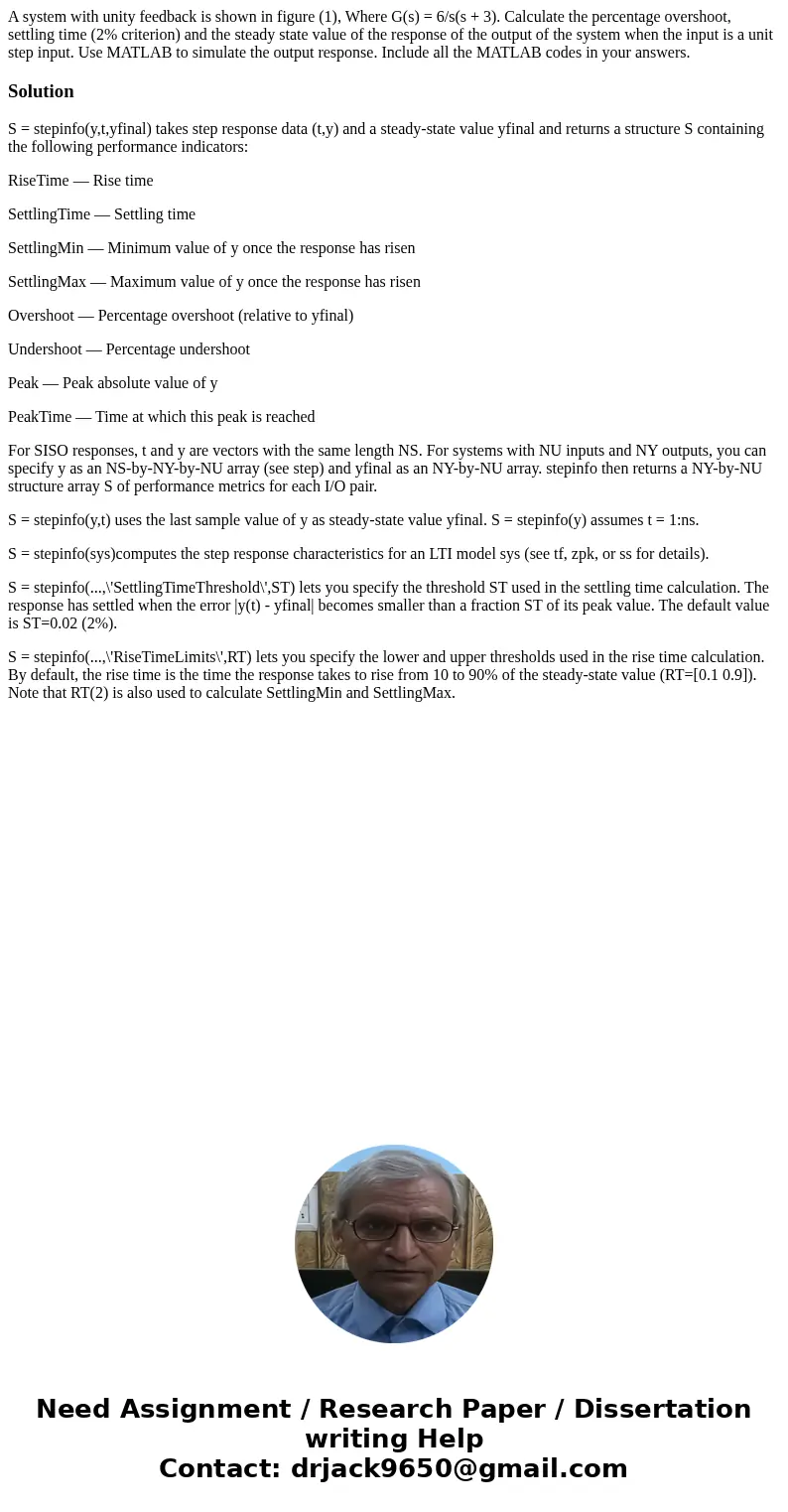A system with unity feedback is shown in figure 1 Where Gs
Solution
S = stepinfo(y,t,yfinal) takes step response data (t,y) and a steady-state value yfinal and returns a structure S containing the following performance indicators:
RiseTime — Rise time
SettlingTime — Settling time
SettlingMin — Minimum value of y once the response has risen
SettlingMax — Maximum value of y once the response has risen
Overshoot — Percentage overshoot (relative to yfinal)
Undershoot — Percentage undershoot
Peak — Peak absolute value of y
PeakTime — Time at which this peak is reached
For SISO responses, t and y are vectors with the same length NS. For systems with NU inputs and NY outputs, you can specify y as an NS-by-NY-by-NU array (see step) and yfinal as an NY-by-NU array. stepinfo then returns a NY-by-NU structure array S of performance metrics for each I/O pair.
S = stepinfo(y,t) uses the last sample value of y as steady-state value yfinal. S = stepinfo(y) assumes t = 1:ns.
S = stepinfo(sys)computes the step response characteristics for an LTI model sys (see tf, zpk, or ss for details).
S = stepinfo(...,\'SettlingTimeThreshold\',ST) lets you specify the threshold ST used in the settling time calculation. The response has settled when the error |y(t) - yfinal| becomes smaller than a fraction ST of its peak value. The default value is ST=0.02 (2%).
S = stepinfo(...,\'RiseTimeLimits\',RT) lets you specify the lower and upper thresholds used in the rise time calculation. By default, the rise time is the time the response takes to rise from 10 to 90% of the steady-state value (RT=[0.1 0.9]). Note that RT(2) is also used to calculate SettlingMin and SettlingMax.

 Homework Sourse
Homework Sourse